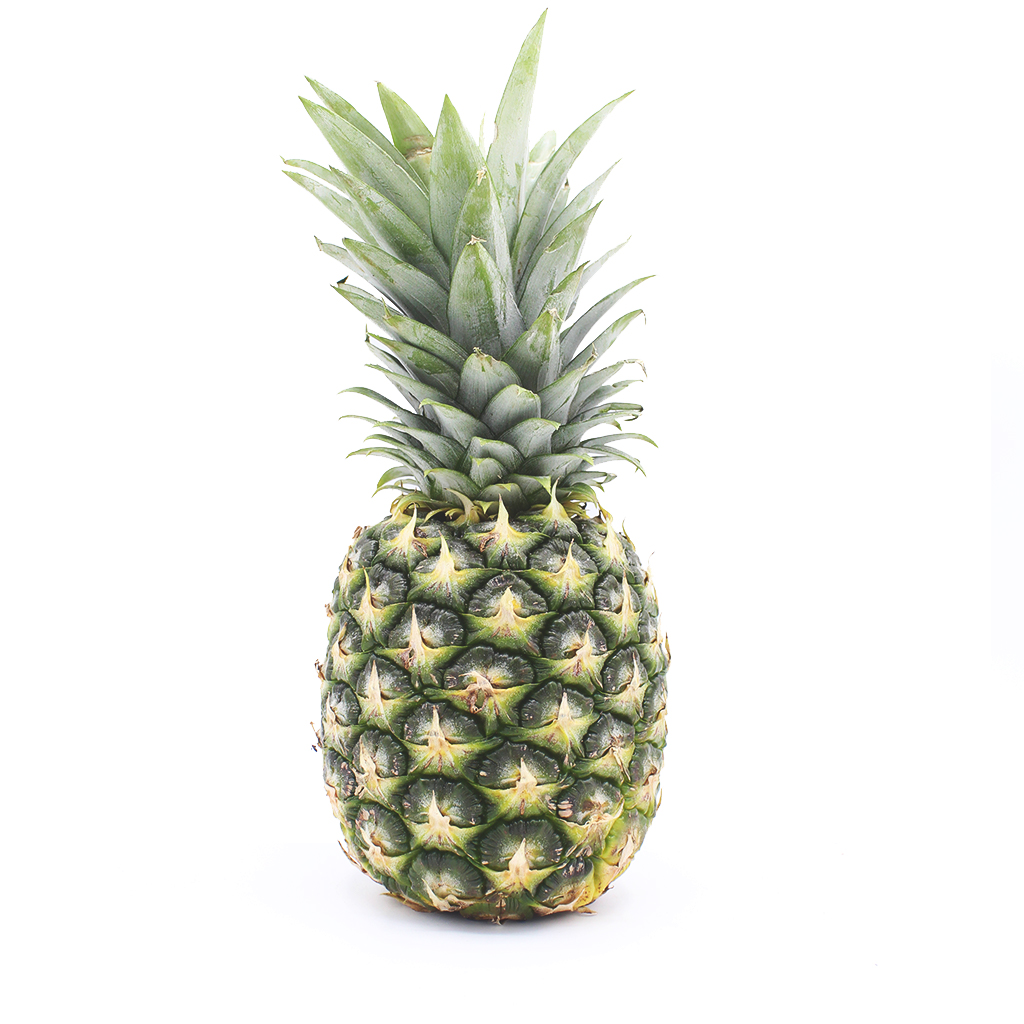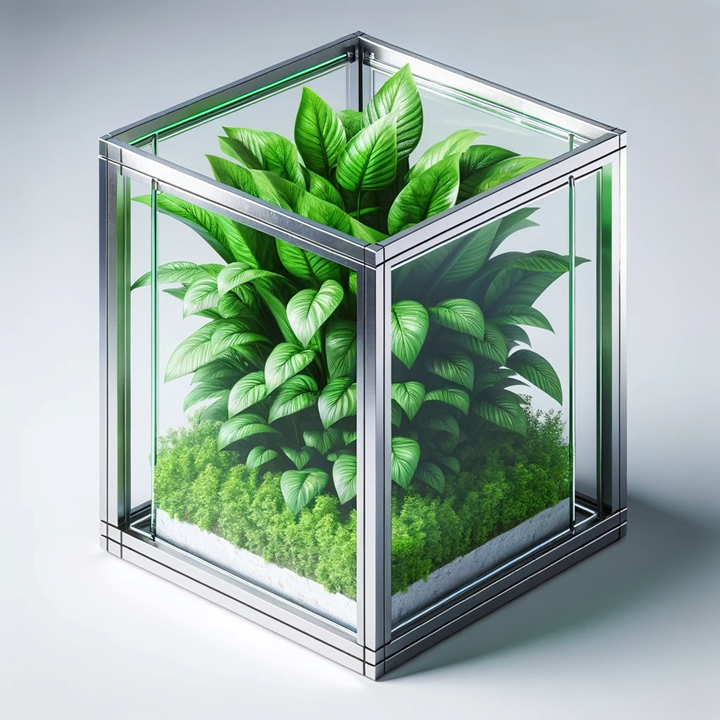In January 2023, I (Martin Kentish, founder & MD) picked up a pineapple in a supermarket and read the label. It had travelled 5500 miles from Costa Rica. I asked myself what were the conditions in Costa Rica permitting pineapples to thrive, and could they be reproduced in the UK? It turned out they could. This was also a time when I noticed the sheer amount of imported goods that could, given the right conditions be grown in the UK, but weren’t.

This led to the ‘BioCube’ concept (AI render shown below), a working name I gave to a ‘smart’ terrarium/greenhouse concept. You simply told the Cube what you had put in and it did the rest to create the optimal conditions. It had all the sensors and devices to create the conditions suitable for the plant, including the daily cycle of light, darkness, heat and water. This wasn’t new (Eden Project is a big version of this idea!) but I was curious.

The challenge was then to build one but using freely available components and a tiny budget. Could it be done? It turned out it could! The resulting device contained all the necessary environmental sensors, a micro-controller and various actuators to control those conditions (lights, misters, pumps etc). It wasn’t pretty, but when assembled it worked and it talked to the outside world.
What did people think of the concept? I was increasingly aware of competitive products and the inertia to keep the status quo. So talking to people and gathering their views was massively important. I talked to anyone who would listen and this led to a fundamental shift. One of the earliest people I spoke to about the Cube told me it was a good idea, but not for him because he liked his convervatory and didn’t want to transform it into as he describes it “A lab with glowing cubes”. Basically, this was a “no thankyou” ! He did however ask if there was anything I could do to keep what he already has alive. So, this led to me taking the various components out of the Cube and creating various ‘modules’ that could talk to each other. A sensor could be discretely placed in soil, informed of what it is measuring and communicate with the outside world. Essentially, this would allow the plant to talk to its owner and inform them of its condition.
Next step, rather than talk to the owner, they could talk to a device that responded to the condition thus automating the plant’s needs. This also offered the owner the potential to grow plants that were previously too difficult. Sensors would communicate the plant readings with the owner or send instructions to other devices to fully automate a plant’s care.
This modular approach was a turning point into realising there was the potential of an innovative, scalable business. Feedback from approximately 80 people from a diverse set of backgrounds massively shaped the concept.
First, using the technology had to be easy. Anyone who could use the basic features of a smart phone should be able to set up and use any of the devices. Secondly, it had to be inexpensive. Users should be able to try out the basic features of a simple device without it breaking the bank. Thirdly, it had to be scalable so a customer could go from monitoring with a single device to fully automating a growing environment of any size when they need to.
During this learning process we kept a close eye on the competition. After all, the concept wasn’t new. There were smart solutions already available ranging from inexpensive sensors to vertical farms. However, what was clearly missing was a pathway from one to the other.
Feedback helped identify three types of customers. First were the ‘killers’ – customers who spent lots of money on plants but had a tendency to kill them within 6 months from purchase. Secondly, there were the ‘growers’ – hobbyists who grew things at home or in greenhouses who were keen to use their skills in different ways. Lastly, there were the ‘farmers’ – commercial growers with a need to diversify into other commercial crops. What came from the feedback was a natural pathway from killers to farmers.
It’s been a journey of discovery so far, and a valuable one. From the initial BioCube concept to the modular approach has opened a significant opportunity to provide components for people to build their own solutions. It has also created the ‘building blocks’ for PI to rapidly develop other products too, including the original BioCube concept, smart incubators, remote crop monitors etc.
The journey continues!
-Martin
